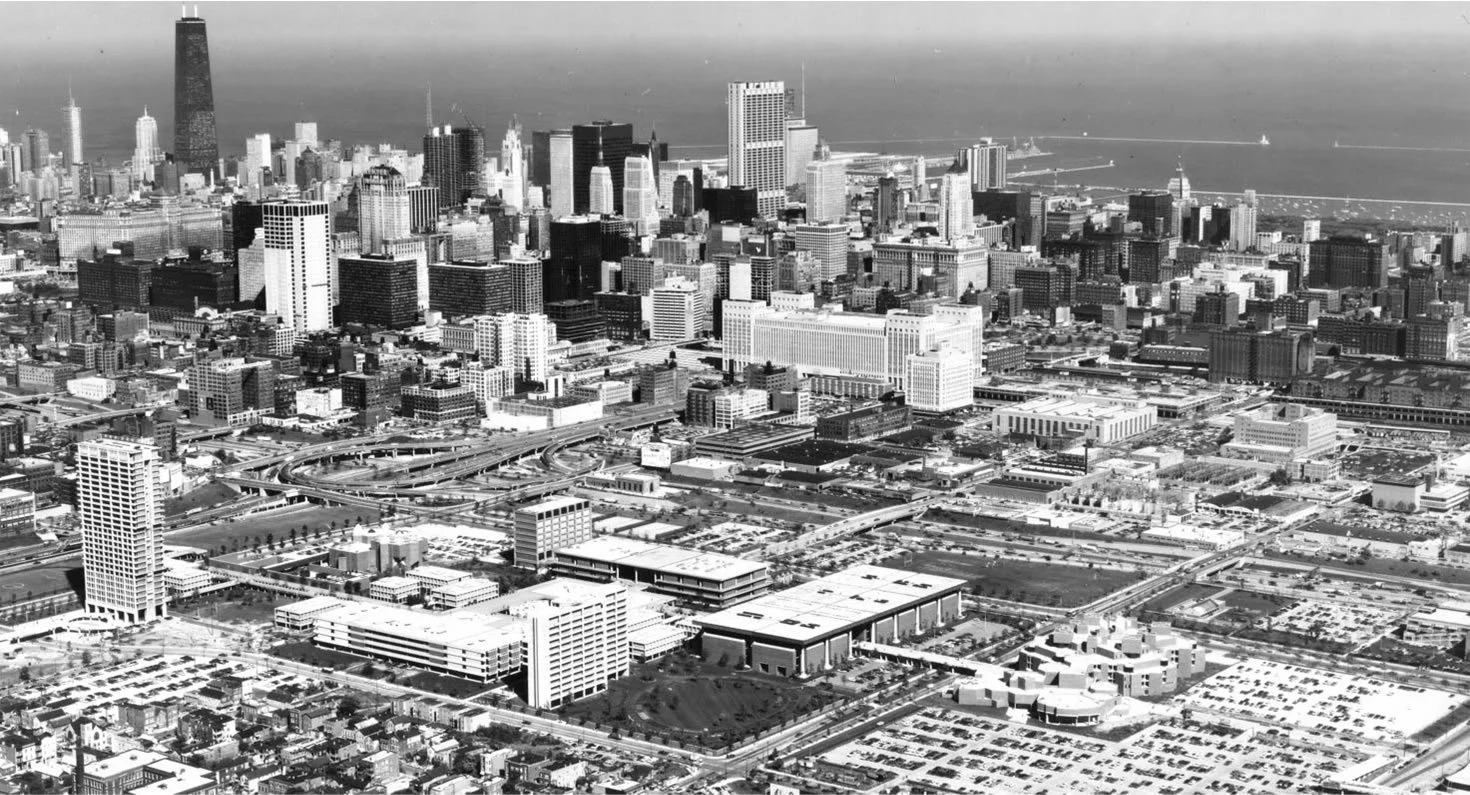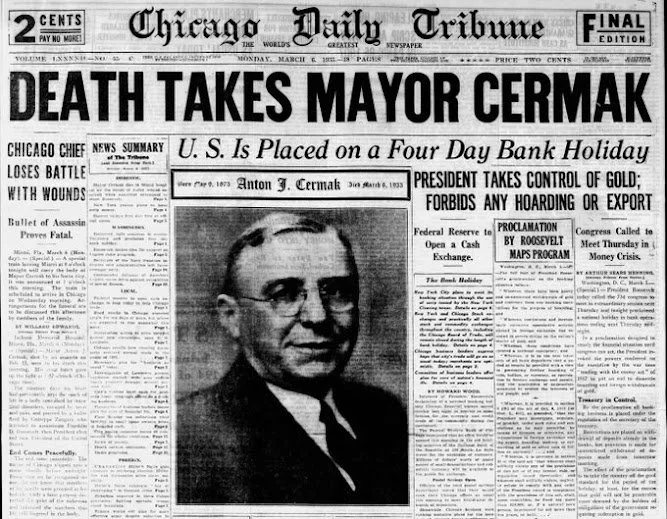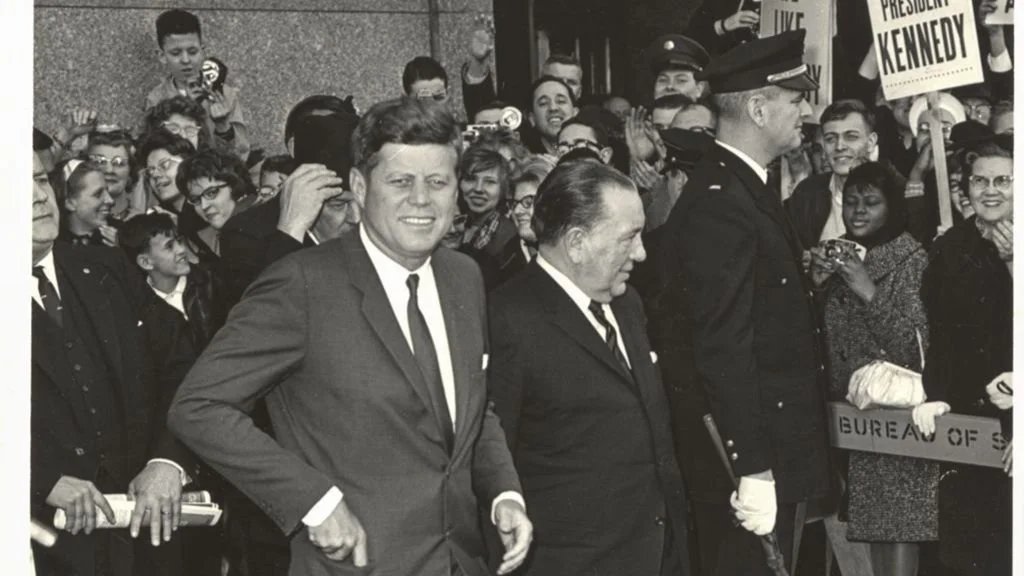Chicanery, 1960 Part II
An Era of Corruption
Even before the election there were attempts to confirm suspicions of fraud in Chicago. In October 1960, the city’s Corporation Counsel David H. Brill formed the Committee on Honest Elections. The group quickly uncovered what they believed to be evidence of irregularities in six of the 50 wards. “Voters” were living in vacant lots and retail establishments with no residential quarters. People had been registered multiple times. In total, Brill surmised that 10% of the voter rolls in Chicago were made of in his words: “deadheads, ghosts and phantoms”.
Chicago, Illinois in the 1950s and 1960s
Richard J. Daley, mayor of Chicago, was born on May 15th, 1902 in the city he would eventually govern with an iron fist. He was the only child of a sheet metal worker and a suffragette, both the descents of Irish Catholics who had moved to the United States during the great famine. His mother, Lillian, regularly brought him along on marches as a child and harbored high hopes for his future. In 1933 Daley earned a Bachelor of Laws from DePaul University College of Law. Shortly thereafter he began his political ascent, becoming a precinct captain, Chief Deputy Comptroller of Cook County and member of the Illinois House of Representatives over the next three years.
Daley had always been a Democrat, but was elected as a Republican to the legislature as part of a strategy in which he replaced a Republican representative on the ballot that had died weeks before the election took place. Once in office he switched back, returning to the Democratic side of the aisle. A couple years later the death of another politician gave Daley a chance to move up to the Illinois Senate. In 1941 Daley was elected Minority Leader. He remained in that role until 1946. That year, he attempted to run for Cook County Sheriff and lost for the first and only time in his career. This may have been a blessing in disguise for the ambitious future mayor. The sheriff’s office was notorious for its corruption, and very few who held the position made it out scandal-free. The year, considered a disastrous year for Democrats in general due to President Truman’s poor approval rating, was the same year Daley’s mother died, apparently disappointed that he would want to be a “policeman”.
Around this time, Daley was made the 11th Ward’s Democratic Committeeman. His predecessor, Hugh Connelly, was an individual known for his association with organized crime in the city. Connelly, like Daley, had lost an election in 1947, in his case for alderman. He was also in poor health. Daley, spotting an opportunity for advancement, had organized a meeting with the Poles that had been moving into Bridgeport where he called attention to Connelly’s condition and promised to support a Pole for the aldermanic seat that Connelly had lost if they supported him for the Committeeman job, which they did. As a committeeman, he had a seat on the Central Committee of the local Democratic party. Not all committeeman were considered equal but since the 11th ward was heavily democratic, Daley was now one of the most powerful. He was subsequently appointed by Governor Adlai Stevenson II (Democratic nominee for president in 1952 and 1956) as the head of the Illinois Department of Finance in 1949. In 1950, another bad year for democratic candidates, he was elected Cook County Clerk. This shored up the support of his colleagues, but also gave him immense control over a significant amount of Chicago’s political patronage machinery.
Richard Daley, 1955
Cook County, the administrative subdivision in which the windy city is located, was established in 1831 with a population of 10,201. It grew rapidly and within a century it was home to 5.1 million people- the second most populous in the entire country. Daniel Pope Cook, a statesman and the county’s namesake was a registered democrat. The first mayor of Chicago, William Ogden, was also a democrat and expanded the party by recruiting Irish immigrants- held back by widespread anti-Irish discrimination— and rewarding them for their loyalty with jobs and political favors.
By the end of the 1800s, decades after the “Great Chicago Fire” had left 100,000 Chicagoans without a home, the local Democratic party had accumulated a significant amount of power, benefitting from an increase in immigration to the city from eastern and southern Europe. For the same reason however, they soon found themselves starkly divided along ethnic lines. This was corrected by Anton Cermak, an immigrant born in Austria-Hungary who was able to unite the party and get himself elected as Chicago’s 44th mayor in 1931. Two years later, Cermak was shot and killed by an Italian immigrant named Giuseppe Zangara while shaking hands with President-elect Franklin D. Roosevelt in Miami, Florida. Zangara intended to assassinate Roosevelt but a woman standing near him noticed what he was doing and hit his arm with her purse, causing him to hit Cermak instead. After Cermak’s death his allies Patrick Nash and Edward Kelly seized control of the Cook County Democratic Party and transformed it into a massive, corrupt and powerful political machine.
The Chicago Daily Tribune Reports the Death of Cermak, 1933
By the time Richard Daley took the reigns of the party in 1953, Nash had died of natural causes and Kelly, faced with a voter revolt after fourteen scandalous years as mayor (and for his support of racial integration), had been forced into retirement by his protege, then party chairman Jacob Arvey. Kelly’s successor, businessman Martin Kennelly (who was not for integration), was seen as a reformer who could help save the Democratic party’s disintegrating reputation. While the machine didn’t love the idea of someone in a city-wide office with a reformist mindset, they also preferred a Democrat to a Republican so they threw their support behind him. For reasons related to a failed candidate for County Sheriff, Jacob Arvey was quickly replaced as chairman by Joseph Gil, an older man who was not expected to hang around for long. Next cycle, Daley and his rival Clarence Wagner, committeeman from the 14th Ward, fought for control. Wagner, fearing Daley was on the path to winning the chairmanship, managed to delay the vote to give him more time to secure support for himself. He took a group of influential politicians up to Canada on a fishing trip, where he would die in an automobile accident. Daley, with no competition left, was finally elected chairman.
Mayor Kennelly meanwhile, had squandered any good will he had, for example, by running civil service exams again. For years Chicago’s Democratic machine had been holding exams infrequently or made them so difficult that nobody could be hired through the traditional process. Political allies would then be hired as “temporary” employees, supporting the tradition of political patronage. By fixing the system, Kennelly had lost ward bosses around 12,000 jobs, which enraged them. He had also distanced himself from the city’s corrupt unions, and went way too far in his stance against integration, jeopardizing Democratic ties to the black electorate, which had been forged by Nash and Kelly when they were in charge.
As the mayoral election of 1955 approached, the black vote in the city was primarily controlled by Rep. William Dawson, who handled the patronage of a sub-machine in the three African American dominated wards. Dawson, a United States Representative elected in 1942, was loyal to the Democratic party machinery despite many African Americans at the time voting for Republican candidates. Dawson, like Kennelly, was not in favor of integration. This was because it wasn’t supported by the party bosses, but more so because he believed that spreading the black vote would shrink his power and influence. However, this did not mean he and the mayor were on good terms. Kennelly had been attacking two of Dawson’s institutions on the South Side. The first, “Policy wheels”, was a lottery like gambling game that was definitely illegal, but Dawson had police officers appointed that wouldn’t disturb it. The other, “jitney cabs”, were unlicensed cabs driven by African Americans because all the licensed cabs were exclusively controlled by white drivers. When Dawson attempted to reason with Kennelly, Kennelly stone walled and insulted him. So Dawson left, determined to ally with anyone who could bring him down.
Utilizing his new authority as chairman, Richard Daley denied Kennelly the party’s endorsement and took it for himself instead, running against him in a Democratic primary. Former Democratic State Representative, Benjamin S. Adamowski, also entered the race on an anti-machine platform. He’d hoped his presence would convince Kennelly to drop out. Kennelly however, stayed in. As more and more black voters turned on him, following his refusal to intervene on their behalf when the Chicago House Authority “froze” the number of black families it would allow in the Trumbull Park Homes public housing project, Kennelly responded with an appeal to white voters. He invoked black stereotypes, railed against William Dawson publicly, and engaged in many other race baiting techniques. He fired all the ward leaders that had voted against his reformist plans previously and vowed to fire any city employees who spoke out against him. The business community remained firmly in his corner, making large donations to his campaign to show their support.
Daley, running a skillful campaign from the Morrison Hotel (which was demolished in 1965), spent most of his time speaking to the ward organizations rather than the general electorate. He held meetings with precinct captains and affiliated Democratic machine workers. Ultimately, Daley won the primary with 49% of the vote. Kennelly came in second place. Adamowski, who tried his best to convey the risk of enabling Daley’s machine, came in third, achieving nothing except for unintentionally splitting the anti-machine vote.
In the general election, Daley faced Republican nominee Robert Merriam. Merriam was a liberal reformist who had changed his party affiliation to run for mayor and been elected twice previously to the city council. He was seen by the public as a “crime fighter”, and broadcasted corruption cases on his own television show: Spotlight on Chicago. Kennelly, dejected, planned to endorse Merriam to sabotage Daley but backed off when Daley’s men were able to convince him that the Republican planned to have him indicted for previous criminal investigations. Adamowski also refused to endorse either candidate. Allegedly machine tactics such as “four legged voting” in which precinct captains would enter the booth with voters to ensure the lever was pulled in favor of Democrats, ballot box stuffing, bribery and financial compensation were implemented. Republican and Democratic election judges were supposed to be available to prevent these things from happening but the city claimed to have lost their applications. A judge that requested to see the voting records was arrested and released without charges at the end of the day. Another judge’s dog was poisoned. Daley won the election with a total of 708,660 votes or 54.93%.
As mayor, Daley ignored his promise to resign his position as chairman, and since the role gave him control over slating candidates for election, the City Counsel was little more than a rubber-stamping organization for his policies. Any alderman in opposition would have their microphones promptly cut-off. On one occasion a reporter observed Daley ally and floor leader Thomas Keane take up an item of business and tell the committee secretary that it had been seconded, although no one had actually done so, and then declare the motion carried. He apparently proceeded to do this with six other matters. Daley repealed his predecessors civil service reforms and embraced organized crime. Police ignored gang violence, allowing bookie joints and prostitution rings to operate mostly unencumbered.
Daley would practice good government as well. He authorized the construction of O’ Hare Airport. He built an expressway system and redeveloped the land surrounding the University of Chicago. He appointed a woman, Elizabeth Wood, to the Housing Authority. She was educated and idealistic, promising to run a clean agency and support integration. By 1959, Daley had earned bipartisan support for re-election handedly, through both noble and diabolical means. He also achieved national recognition as a Democratic leader, ensuring his involvement in John F. Kennedy’s presidential campaign the following year.
Indeed, Daley pushed very hard within his state for a Democratic victory in 1960. On November 4th, four days before the vote was held, Daley and his men pushed Kennedy through a crowd of 30,000 supporters packed into Chicago stadium. The party had bought half an hour of network television time on NBC to broadcast a speech from the candidate to the nation. It was the first time any political organization had done so.
Senator Kennedy and Mayor Daley, 1960
Shortly after announcing the recount effort in 1960, Sen. Morton flew to Chicago to confer with Republican leaders operating in the area. In Cook County, Benjamin Adamowski, who had lost to Daley in the 1956 Democratic primary and since switched parties, had lost re-election to his position as the Cook County State’s Attorney. Adamowski’s father had been a leader in the Polish-American community, and Adamowski himself was highly respected. During his first term (which began in 1956), he and his team had exposed corruption in the circuit courts, legal profession and police department. Famously, his work culminated in the “Summersdale Scandal”, where eight police officers who conspired to burgle dozens of retail establishments on the North Side were brought to justice.
Adamowski may have been appreciated by his constituents, but he had a target on his back. Not just for his work in office but also due to his personal history with Mayor Daley. They’d come up together, both Democrats in the windy city, but were now rivals. Daley was rumored to have seen Adamowski as a threat to his political machine, considering his dogged attacks against corruption, and so it was considered likely that there may have been some “funny business” with Adamowski’s vote count. More importantly to Sen. Morton, he was also a supporter of the belief that Daley had contributed overall to Nixon’s loss of Illinois. Considering the narrow margin of his own loss, Adamowski was entitled by law to a recount, which began on November 29th.
Works Cited
Allswang, J.M. (2019) Bosses, machines, and urban voters. Baltimore, MD, Baltimore, MD: Johns Hopkins University Press, Project Muse.
Binder, J.J. (2020) ‘DID THE CHICAGO OUTFIT ELECT JOHN F. KENNEDY PRESIDENT?’, themobmuseum.org, 22 October. Available at: https://themobmuseum.org/blog/did-the-chicago-outfit-elect-john-f-kennedy-president/.
Bomboy, S. (2017) ‘The drama behind President Kennedy’s 1960 election win’, constitutioncenter.org, 7 November. Available at: https://constitutioncenter.org/amp/blog/the-drama-behind-president-kennedys-1960-election-win (Accessed: 01 October 2024).
Carlson, P. (2000) ‘Another Race To the Finish’, The Washington Post, 17 November.
Cheney, K. (2022) ‘See the 1960 Electoral College certificates that the false Trump electors say justify their gambit’, POLITICO, 7 February.
Royko, M. (1988) Boss: Richard J. Daley of Chicago. New York: Plume.
Shesol, J. (2022) ‘Did John F. Kennedy and the Democrats Steal the 1960 Election?’, New York Times, 18 January.



